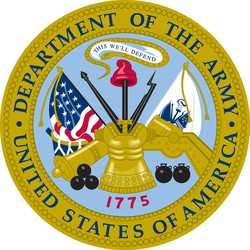Members Of 3rd Combat Aviation Brigade Credit People, Planning
For Success
 As grand
accomplishments go, a Task Force Marne aviation brigade's 200th
combat air assault mission during their current deployment to Iraq
went off with as little fanfare as possible. An uneventful mission
is just fine with the pilots of the 3rd Infantry Division's 4th
Battalion, 3rd Aviation Regiment, 3rd Combat Aviation Brigade, air
assault unit.
As grand
accomplishments go, a Task Force Marne aviation brigade's 200th
combat air assault mission during their current deployment to Iraq
went off with as little fanfare as possible. An uneventful mission
is just fine with the pilots of the 3rd Infantry Division's 4th
Battalion, 3rd Aviation Regiment, 3rd Combat Aviation Brigade, air
assault unit.
"For us it went exactly as planned," said Chief Warrant Officer
3 Nigel Huebscher, the mission's flight lead. "We hit the 'time on
target' spot on the [landing zone] and performed the mission as
close to flawlessly as we can."
The first 12 months of the 3rd CAB's 15-month deployment in
Multinational Division Center has seen many records knocked down --
total flight hours of 100,000 and fuel pumped of more than 10
million gallons, to name a couple.
During the unit's deployment to Iraq in 2005, 4-3rd Aviation
Regiment soldiers executed more than 110 air assault missions in
their first 12 months, said Army Capt. Conor Stilwell, assistant
operations officer.
Based on the high number of air assault missions during this
deployment, Huebscher said, the 4-3rd Aviation Regiment has
achieved an operating standard that promotes uneventful, successful
missions.
"To go along with that, the people we have flying know what they
need to do to get the mission done," he said.
Many of the unit's pilots and crewmembers were deployed to Iraq
in 2005, and many were assigned to 101st Airborne Division,
bringing a wealth of experience to the fight, Stilwell said.
Along with the experience, new systems and technologies are in
place for this deployment, making execution of air assault missions
much easier.
"I would say that all the assets we have available to us do very
much streamline the process and allow us to maximize our time, and
gives us time to better prepare," Huebscher said.
 Assets include advances
in communication, which have made planning much easier, Stilwell
said. The more-efficient communication, including holding meetings
with visual references such as maps online over a secure network,
has allowed the unit to plan and execute several missions at the
same time.
Assets include advances
in communication, which have made planning much easier, Stilwell
said. The more-efficient communication, including holding meetings
with visual references such as maps online over a secure network,
has allowed the unit to plan and execute several missions at the
same time.
Sometimes, Stilwell said, the calendar will be stacked with
concurrent missions in various phases of planning with different
ground brigade combat teams in Task Force Marne, demanding an
efficient process.
Planning air assault missions is usually a three-day process.
The ground brigade combat team creates a basic plan for a
particular air assault mission and submits it to Task Force Marne
for approval. The ground team and 4-3rd Aviation Regiment then meet
to discuss mission coordination and aviation support.
Taking the information, aviators work up a plan of support and
present it to the brigade combat team within 24 hours in an air
mission brief combining the ground unit's expectations and what the
aviation unit can deliver.
"Basically, it shows the plan in simple steps so no one can say
they don't understand the plan," Stilwell said.
Once the plan has been finalized, aircrews get together to go
over the mission to ensure everyone, from crew chiefs to pilots,
understands it.
In the past meetings and planning were more difficult, Stilwell
said. Before this, the air mission commander and flight lead would
have to travel to the ground unit's location for meetings or do it
over the phone. Now, with the ability to have meetings over the
secure network, planning has become more extensive and clear, which
helps things run quicker and more efficiently.
"The process has gotten smoother," Stilwell said. "Everybody
knows the deal."
(Aero-News salutes Army Sgt. 1st Class Thomas Mills of the
3rd Combat Aviation Brigade Public Affairs Office)
 ANN's Daily Aero-Term (04.25.24): Airport Rotating Beacon
ANN's Daily Aero-Term (04.25.24): Airport Rotating Beacon ANN's Daily Aero-Linx (04.25.24)
ANN's Daily Aero-Linx (04.25.24) Klyde Morris (04.22.24)
Klyde Morris (04.22.24) Airborne 04.24.24: INTEGRAL E, Elixir USA, M700 RVSM
Airborne 04.24.24: INTEGRAL E, Elixir USA, M700 RVSM Airborne 04.22.24: Rotor X Worsens, Airport Fees 4 FNB?, USMC Drone Pilot
Airborne 04.22.24: Rotor X Worsens, Airport Fees 4 FNB?, USMC Drone Pilot




